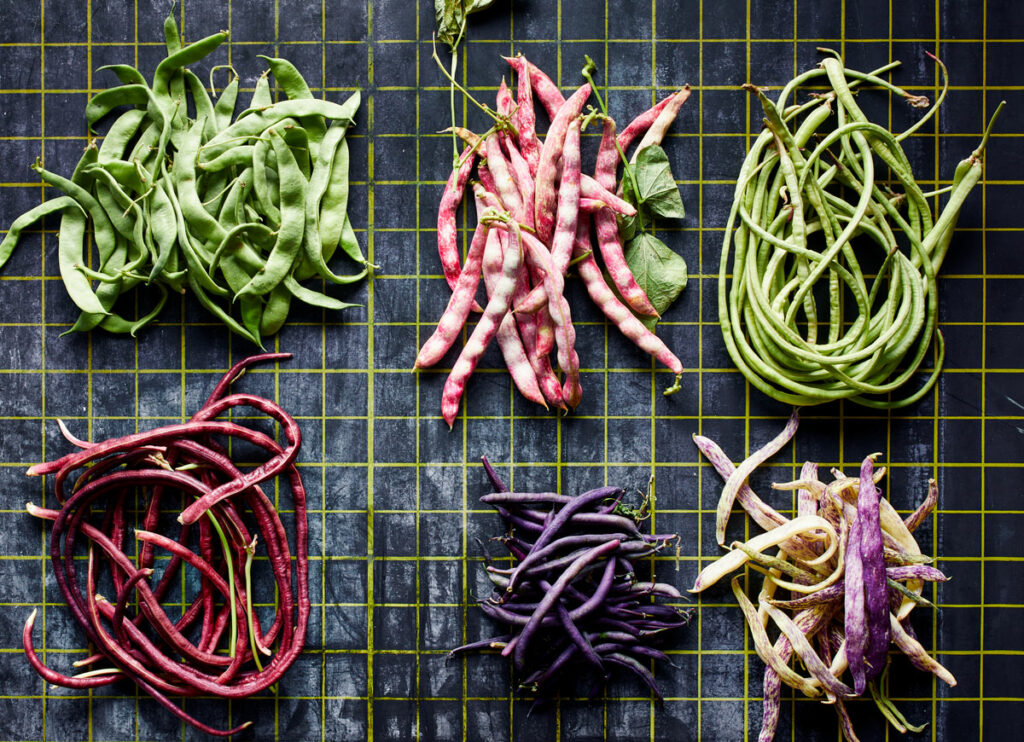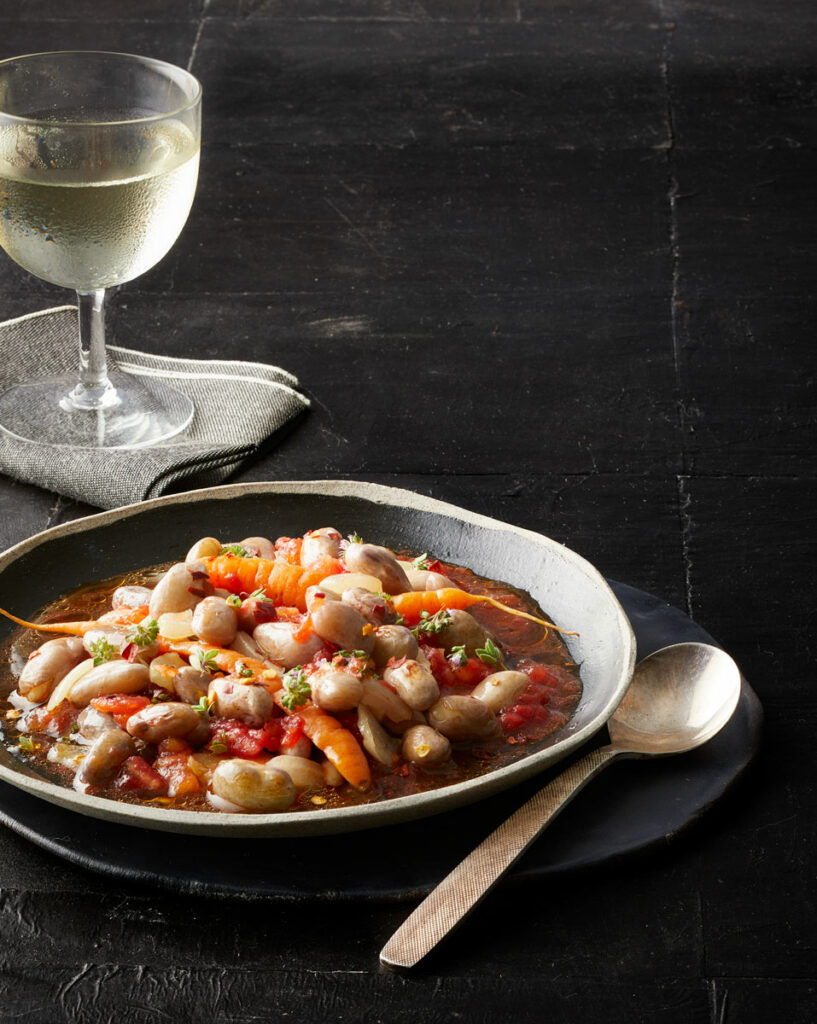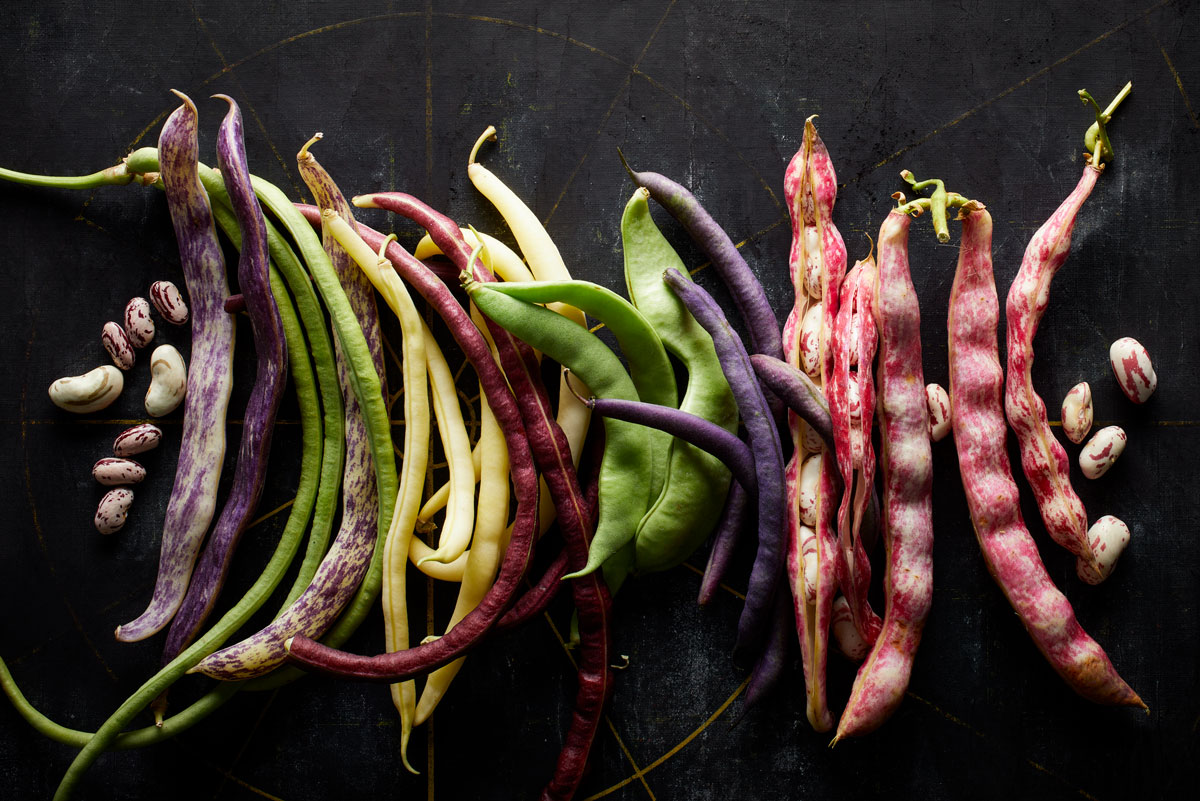Snap & Shell Beans
Each year, I resolve to stay inside the rails with my bean growing. I consider the bean garden basics to be the tiny filet bean, which I harvest early and often; an Italian flat bean, which gets better as it gets bigger; and something (one thing) chosen just because. Problem is, my just because collection expands as I go. Just because of its brilliant color, wild pattern, weird shape, groovy name … it gets out of control quickly.
FEATURED IMAGE (TOP)
Brightly Wrapped Gifts. Beans provide the fireworks for any kitchen garden. In a sea of leafy green things, a psychedelic flash of color is always welcome.
Beans can lightly be divided into two categories: snap and shell. Snap beans are perfect for summer eating. They freeze, pickle, and ferment with unpredictable results, so get ’em while they’re fresh. Shell beans are wildly versatile. They can be picked young and the whole pod eaten like a snap. More mature, the pods can be popped open, and those tender beans can be lightly steamed. Once fully mature and shriveled up, the beans inside are hard as marbles and can be saved throughout the winter.

A FAMILY OF BEANS
Italian Flat. I almost always grow Jumbo, which matures early and keeps going for months. Big Italian beans hold up to slow, long cooking (think hours), and melt in your mouth. Cooked this way, they freeze well.
Borlotto. These undulating pods are especially gorgeous and one of my favorites to grow as a pole bean. Nothing is more delightful than a Mason jar full of dried speckled borlotti sitting on a shelf in the winter pantry.
Long Beans. Green and red noodles are just plain entertaining. A single bean is almost enough to feed a family of four. Use them in stir-fries or anything that necessitates a wok. I rarely harvest mine because they’re too fun to look at.
Filet Beans. My favorite is interspersing yellow, green, and purple filet beans, which turn green when you steam them. It’s best to pick them no wider than a bucatini. A platter of these fine haricots vert deserves a knob of your best butter.
Dragon Tongue. A must have for the name alone, these festive pods make for choice fresh eating, and also transform into a wonderful dried bean. These keep in my pantry along with other favorite shells like Good Mother Stallard, Succotash, and Tarbais, the cassoulet bean.

A Simple Bowl of Beans
This is one of those humble winter dishes that can handle spontaneous additions and adjustments. More liquid, and it’s soup. Less liquid, and it’s a side dish. Toss in a spoonful of pesto or a few seasonal vegetables, especially small steamed carrots, sautéed leek, softened dried tomatoes, or whatever’s in the winter larder.
INGREDIENTS
½ pound dried beans (borlotti, Tarbais, or any medium-sized dried bean)
A sprig of thyme stripped from the stem
1 chunk Pecorino Romano rind, wrapping removed
3 tablespoons olive oil
1 small white or yellow onion, chopped
2 cloves garlic, sliced thinly
Salt & freshly ground pepper
DIRECTIONS
Add the beans, thyme, and Pecorino Romano rind to a pot. Add enough water to cover. Bring to a boil, then cover and reduce to a simmer. Cook between 20 and 50 minutes, until the beans are soft and velvety and much of the water has been absorbed. Discard the rind. Add salt and pepper to taste.
In a pan, sauté the onion and garlic in the olive oil on very low heat until soft. Add to the pot of beans. Adjust seasoning and add water and reheat if a soupier version is desired.
Serve immediately in a pretty bowl. Add any additional toppings and the last flecks of thyme from the cutting board and another grind of pepper and salt.



